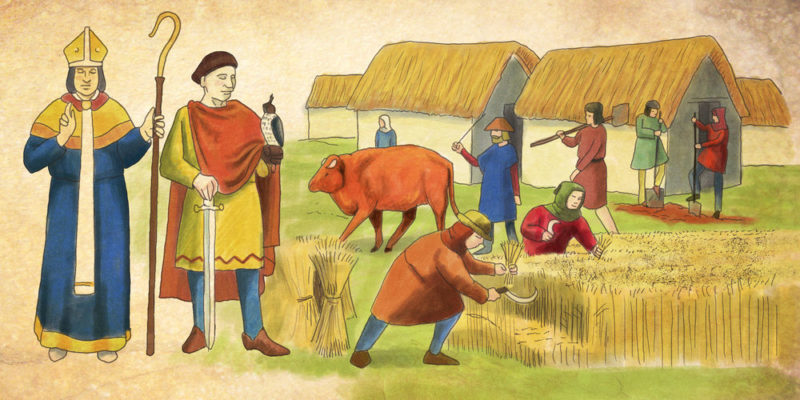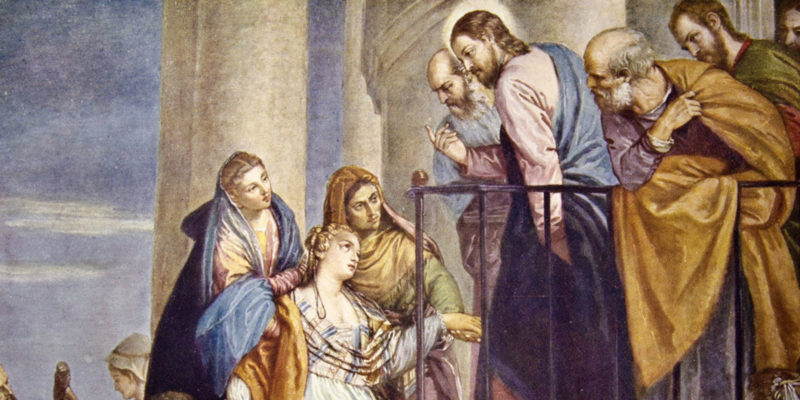We explain what the medieval era was, its characteristics and its stages. Also, its economy, society, the role of the Church and more.
What was medieval times?
The medieval period, also known as the Middle Ages or Middle Ages , was the period of history that followed the Ancient Ages , which ended with the fall of the Roman Empire in the 5th century AD. C., and that preceded the Modern Age , which began with the discovery of America in 1492.
The medieval period took place in Europe between the 5th and 15th centuries AD. C. and was considered a time of ignorance, superstition and social oppression, unlike the Ancient and Modern Ages that stood out for their advances in the arts and sciences . However, as the centuries passed, it was understood that the medieval period was an important and dynamic period that made it possible to achieve an unprecedented cultural unity in Europe .
The fall of the Roman Empire in AD 476. C. had repercussions on the political, economic, social and cultural structures that were influenced by the Germanic peoples of northern Europe. These peoples introduced new forms of leadership under the monarchy and established the Christian religion as the ideal way of life, which ushered in the medieval period.
Characteristics of the medieval period

The medieval period was characterized by:
- A new form of government , the monarchy .
- Further restructuring of ecclesiastical institutions, with the Christianity as the only accepted form of life .
- A social system based on the feudalism , with the nobility and clergy in the upper class that formed the minority of the population , and the peasants, artisans and slaves in the underclass that formed the majority.
- Economic expansion , population growth and urban development.
- The era of the crusades that consisted of several religious wars promoted by the Catholic Church with the aim of eradicating Muslim rule in the Holy Land.
- The emergence of universities with the aim of training professionals and improving uneducated society .
- The recovery of ancient Greek thought around beliefs and myths .
- The greatest crisis of the Church , in which its power was fragmented.
Stages of medieval times
The medieval period is divided into two main stages:
- High Middle Ages. It took place between the 9th and 11th centuries AD. C. and was characterized by the creation of a feudal regime as a social, commercial and hierarchical system. The figures of the king, the nobles and the clergy made up the upper class (or also called "privileged") and, on the other hand, there was the lower class made up of peasants, artisans and slaves.
- Low Middle Ages . It took place between the 12th and 15th centuries AD. C. and was characterized by the decline of the Church and monarchical power, famine, plagues and the crusades, which consisted of eight military campaigns led by the Catholic Church against Palestine. Many of the intellectual and political structures of Europe remained intact, between the 15th and 16th centuries, they managed to regain intellectual and economic strength and laid the foundations of the Renaissance cultural movementthat was a transitional period between medieval times and the Modern Age.
Economy of medieval times
In the early medieval times the economy was stagnant. From the ninth century on, the land was the main source of wealth. With the emergence of feudalism, in which the minority upper class owned most of the fiefdoms, the land began to be exploited with the labor of the lower class, made up of peasants and slaves .
At the end of the 11th century, agricultural production increased , due to the climatic conditions that were favorable in the sowing seasons and to technological advances, such as water mills and the triennial rotation of crops. As a consequence, the population's diet improved , famine and plagues diminished, and there was a gradual population growth.
Society in medieval times
Society in medieval times was made up of two predominant social classes:
- The upper class . It represented a minority of the population and was made up of the nobility, the king, the wealthiest feudal lords, the clergy, the priests and bishops.
- Low class. It represented the majority of the population and was made up of peasants and artisans, many of them free, and by slaves who were considered property of the nobility.
The Catholic Church in medieval times

The Catholic Church of the Middle Ages was the only European institution with a universal character. He exercised great power over the peasants and over political, social and cultural life. The priests, for the most part, were people of the nobility.
The Catholic Church was made up of a Pope as an ecclesiastical figure of authority and by bishops who ruled power in each feudal zone or region. They considered God and the Bible as the center of all activity . The medieval period was a deeply religious period in which the Christian Church exerted its influence, even throughout Europe, despite the existence of other creeds.
Art in medieval times

Art in the Middle Ages was characterized by representing religious themes , both in architecture , sculpture , literature and painting , with the aim of transmitting the message of God to the population that was mostly illiterate.
The medieval period was a period strongly marked by the Catholic Church and its teaching on values , what is right and what is wrong, sin, the figure of God, angels and demons. The ancient Greek philosophical thought took center stage and reinforced many of the religious ideas , through stories and myths.
The Western Schism was a great crisis of the Church, which contributed to the end of the Middle Ages as a historical period . The event took place in 1378 after the death of Pope Gregory XI, because a group of cardinals chose Urban VI as his successor and another group chose Clement VII. The power of the Catholic Church was fragmented and weakened.
End of medieval times

The end of the medieval period was due to the interaction of various events. After the Western Schism of the Church, other serious problems were added such as a streak of bad harvests that weakened the power of feudalism and strong plagues that struck a large part of the population.
As a consequence, there were peasant uprisings against the feudal lords and the nobles lost strength and power. The peasants gradually migrated to nearby cities and formed a new social class , the bourgeoisie , made up of artisans and merchants who negotiated and established new market conditions.
The above content published at Collaborative Research Group is for informational and educational purposes only and has been developed by referring reliable sources and recommendations from experts. We do not have any contact with official entities nor do we intend to replace the information that they emit.
Luke is passionate about fostering student involvement and connection. He studied psychology for his major and likes learning about the past. Luke aims to specialize in artificial intelligence and cybersecurity. .
Leave a reply
Your email address will not be published. Required fields are marked *Recent post

Sport: What Is It, Types, Risks, Features, Characteristics and Examples

Dogs: Emergence, Features, Characteristics, Feeding and Breeds

Story: Definition, Elements, Structure, Features and Characteristics

